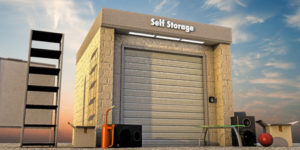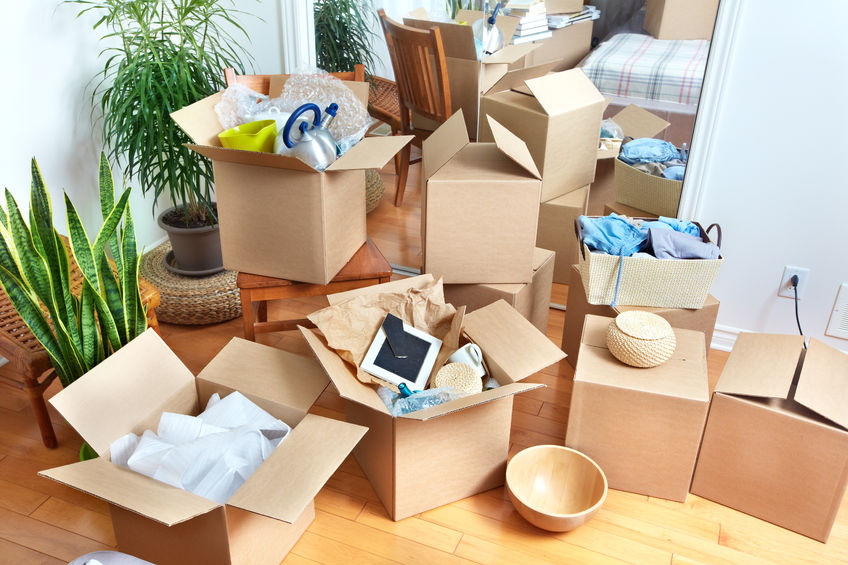While this article spells out 5 mistakes people make when choosing a Self-Storage Facility, and we highly recommend you read about all of them, here is a quick list of the top 5 reasons:
- Not Getting the Size Right
- Not Asking About Climate Control
- Not Studying the Terrain
- Being Guided by Price Alone
- Not Insuring Your Belongings, Before Something Happens
 If you’re relocating to a new area, in a changing relationship status, or simply running out of free space at your existing home, then renting a self-storage unit can be a worthwhile investment, for the short or long term.
If you’re relocating to a new area, in a changing relationship status, or simply running out of free space at your existing home, then renting a self-storage unit can be a worthwhile investment, for the short or long term.
It is estimated that one in ten US households rents some form of self-storage and there are a lot of companies offering this solution – some, better than others.
With so many companies to choose from, how should you go about deciding which self-storage facility is most suitable to your needs?
Experience teaches us that we can learn from our mistakes, or from the mistakes of others. So, we’ll be looking at the factors you should take into account in choosing a self-storage company, on the basis of what others before you have overlooked, or neglected to do.
Choosing a Self-Storage Facility
Mistake #1: Not Getting the Size Right
One of the easiest ways to waste money and cause yourself inconvenience when choosing a self-storage facility is paying for a unit that’s the wrong size.
If the one you ask for is too small to accommodate all your belongings, you’ll need to pay extra for additional storage. And if the storage unit you sign up for is too big, you’ll have unused space around your stored items – ideal for breeding pests, encouraging the formation of mold and mildew, and incurring rental charges for the unneeded storage capacity.
To avoid these scenarios – and to know that the range of unit sizes offered by your prospective self-storage provider includes what you actually want – you should first make an inventory of everything that you need to store, together with the sizes of all your items. These should ideally be measured in cubic feet, based on the dimensions of your items in the actual boxes and crates they’re packaged in.
Mistake 2: Not Asking About Climate Control
Climate-controlled self-storage units will employ thermostats, ventilation, and/or air-conditioning to maintain a contractually agreed range of temperature and humidity within the unit that you rent. Because of the climate control equipment and power usage, units like these will cost more than the standard ones – but if the items that you’re storing are both valuable and sensitive to changes in their environment, then you’ll need to seek out a self-storage company which offers this option.
When choosing a self-storage facility, you should look for a company that offers climate-controlled storage units if you’re intending to store items such as important documents and photographs, leather furniture, antiques, collectibles, electronic equipment, pharmaceutical products, cosmetics, or musical instruments.
If the area in which the self-storage facility is located regularly suffers severe weather conditions, extreme temperatures or humidity, then a climate-controlled unit should definitely be factored into your budget. And if you intend to keep your belongings in self-storage over an extended time period, climate control will be a hedge against changing environmental conditions throughout that time.
Mistake #3: Not Studying the Terrain
Due diligence in choosing a self-storage facility requires you to not only study the paperwork and financial terms of their rental agreement but also to conduct an examination of the physical environment of the facility itself. What you see and learn from this could have an impact on the physical integrity and safety of the items you have in storage, and the level of support and customer service that you’ll receive.
From the physical safety aspect, you should be looking for the essentials:
- Perimeter fencing
- Surveillance cameras with live feed, situated around the facility and in each unit
- A main gate with computerized access controls, and
- Latches on each storage unit so you can use your own lock.
The presence of on-site security personnel or patrols may be an added bonus.
The premises should be scrupulously neat (no trash lying around, or signs of leakage, mold, or residues) – an indication of the care that’s being taken in maintaining and overseeing the physical environment of the facility.
Dollies, hand trucks, ramped access points, and other logistical or environmental assistance all speak to a tendency for the company to facilitate the process of moving items into storage. A definite plus.
Finally, a helpful and informative manner, good physical presentation, and a cheerful disposition on the part of the staff and management you encounter there are a promising sign that the customer care and support you’ll receive will be of a higher standard.
Mistake #4: Being Guided by Price Alone
It’s understood that money is tight. But making the price tag your sole determining factor in choosing a self-storage facility isn’t necessarily the way to go. For one thing, the old adage that “You get what you pay for” may be modified here to read “You get what you pay for – and you’re paying the lowest price for a reason.”
That reason probably comes down to cutting corners in some way – in physical upkeep and cleanliness of the facility, in staff availability and customer service, or more critically, in terms of environmental control and security.
To get what’s truly the best deal for you, it’s worth taking the time and effort to investigate all the factors described so far, in light of the rental fee that’s being proposed. Market perception of the self-storage company should also be considered (Is the facility well populated? If not, why not? Do they have referrals or testimonials from satisfied customers? And so on).
And it’s a good idea to seek a professional opinion from an organization like SnapNsure™ that’s in the know about the industry.
Mistake #5: Not Insuring Your Belongings, Before Something Happens
 These days, most self-storage companies won’t rent you a unit unless you’ve taken out an insurance policy on the items you’ll be putting into it. If you don’t have insurance already, they’ll likely insist on selling you some of their own – typically at an inflated price, and with limited coverage.
These days, most self-storage companies won’t rent you a unit unless you’ve taken out an insurance policy on the items you’ll be putting into it. If you don’t have insurance already, they’ll likely insist on selling you some of their own – typically at an inflated price, and with limited coverage.
Your way around this trap is to have a comprehensive self-storage insurance program from a reputable provider. SnapNsure™ is the only program in the industry that provides coverage against damage resulting from fire, lightning, vandalism, burglary, water damage, flood, earthquake or named storm – all for far less money than a storage company would demand. You can even get on the spot coverage using your mobile device.
If you’d like to know more about your options for choosing a self-storage facility, or would like an assessment and quotation for self-storage insurance coverage, contact the experts at SnapNsure™.


